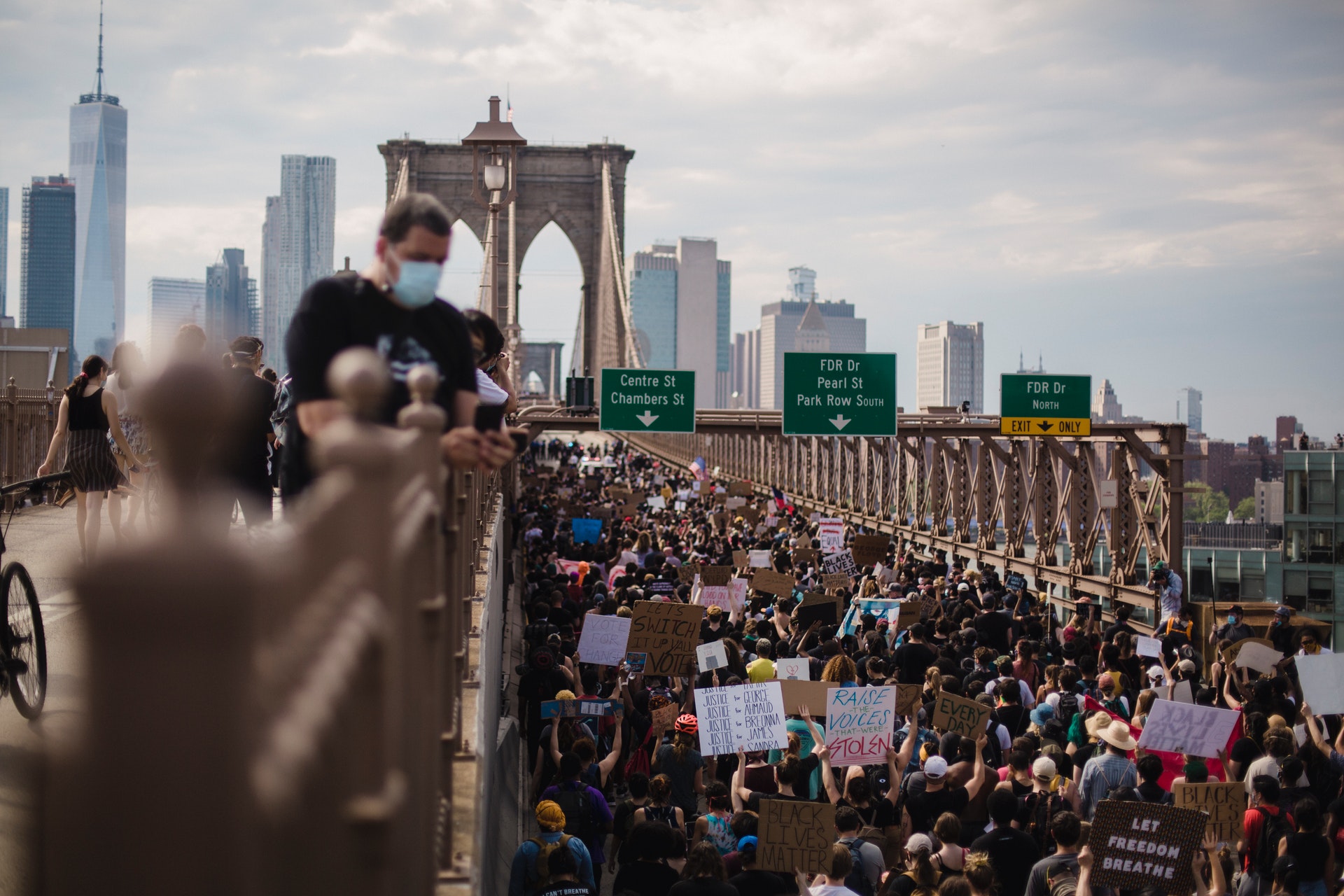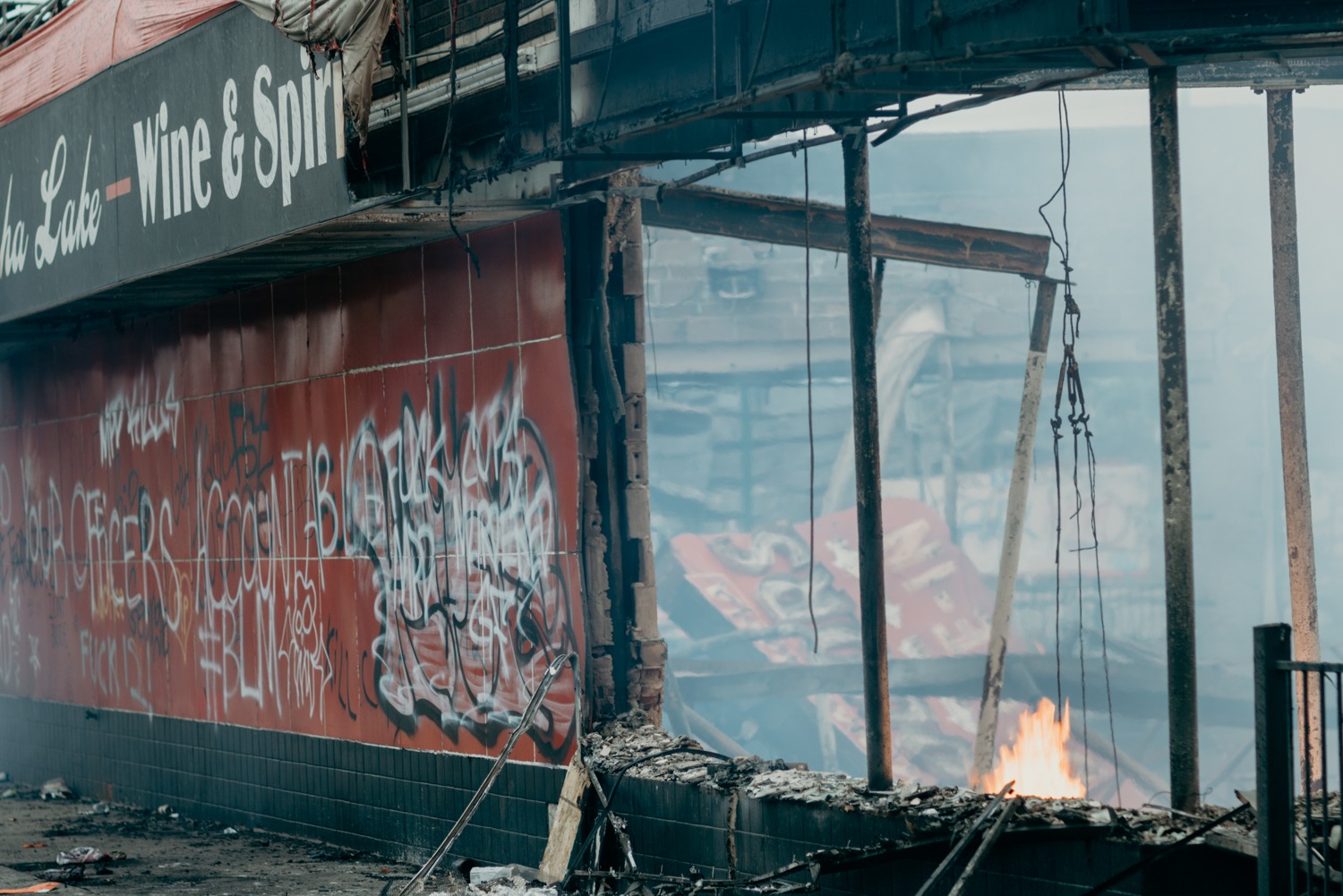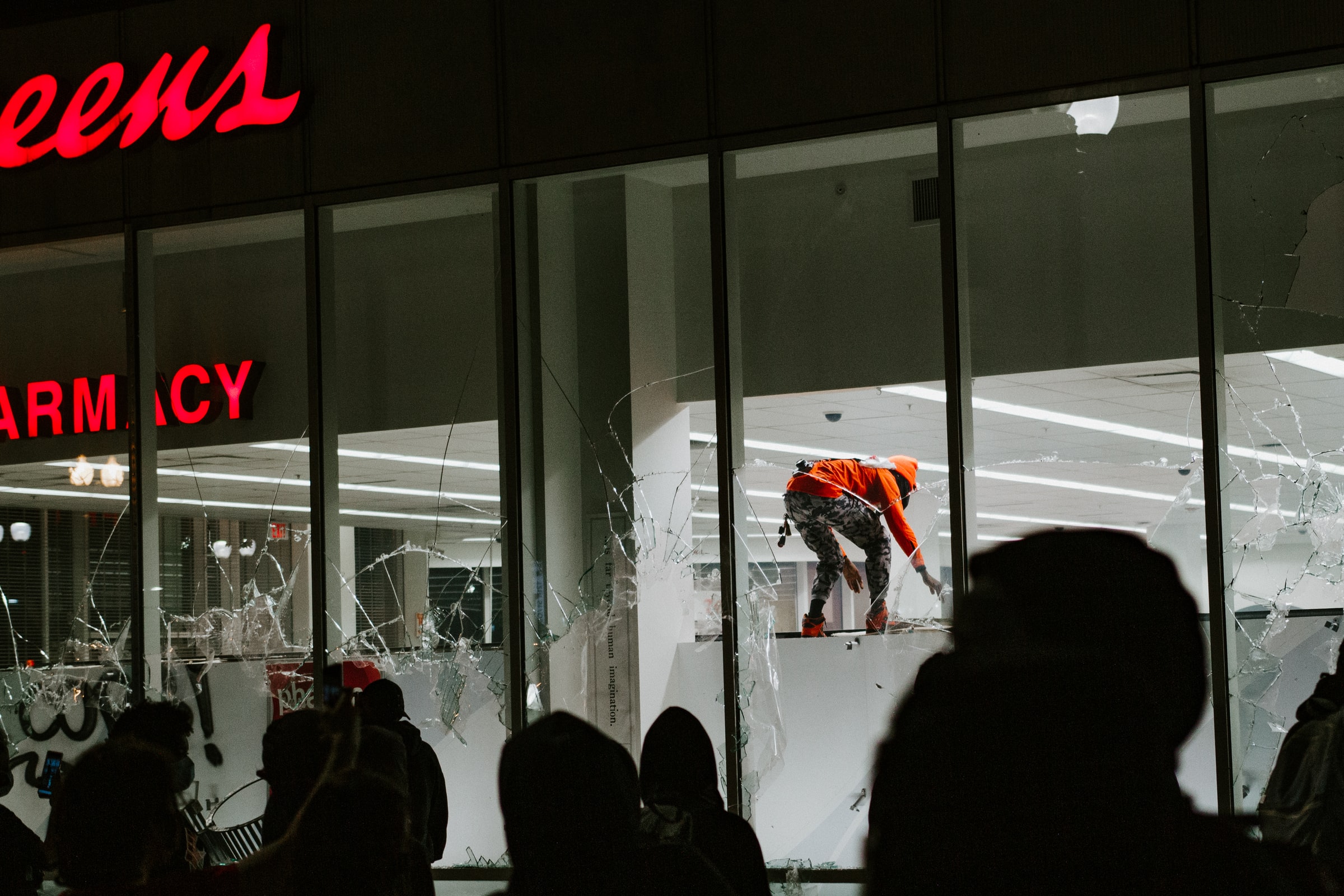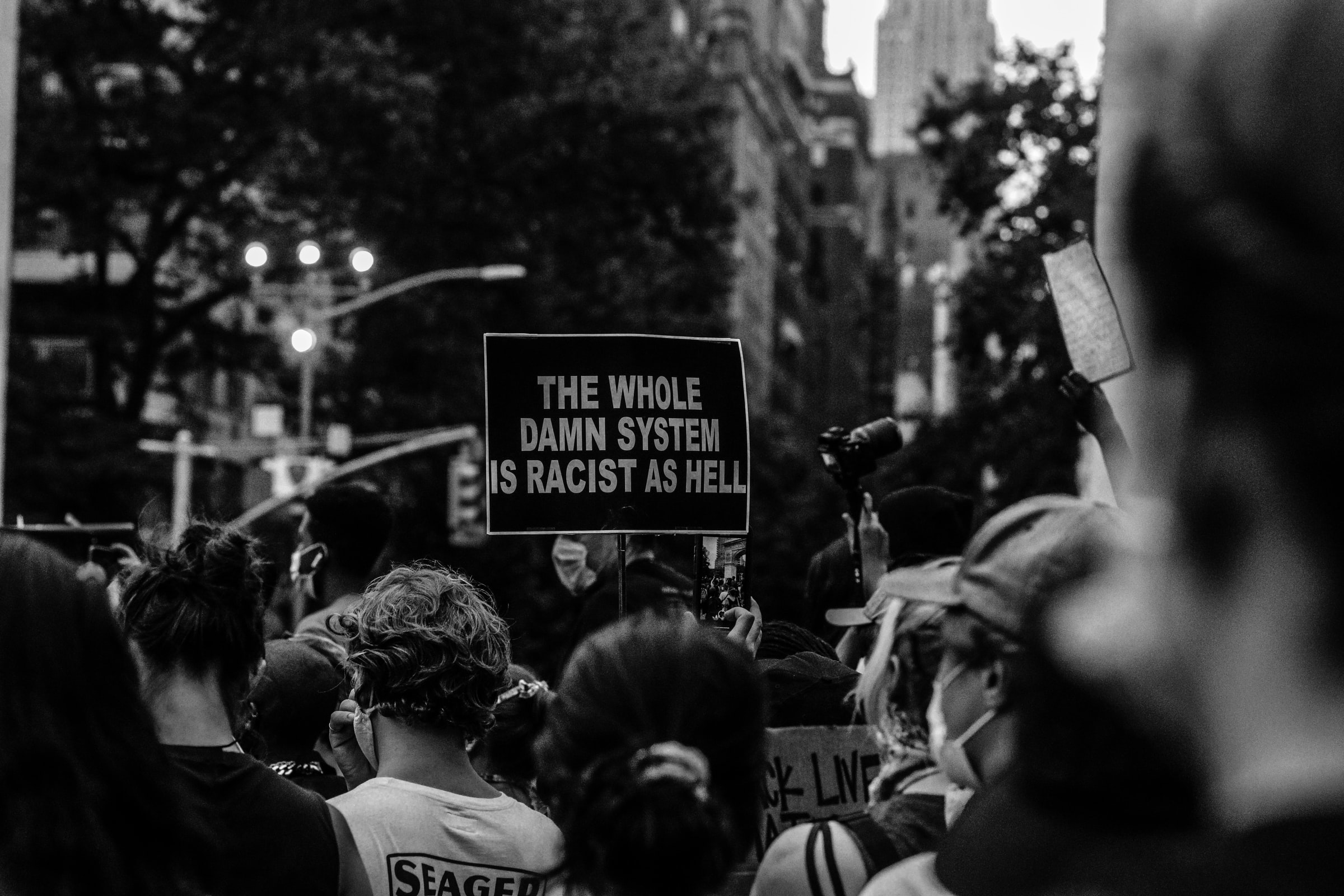It’s Time to Bury Black Lives Matter

By Shaun Tan
Founder, Editor-in-Chief, and Staff Writer
25/4/2021

Derek Chauvin, the cop who killed George Floyd by kneeling on him, was found guilty of second and third-degree murder and manslaughter this week. Hopefully this conviction will bring closure to Floyd’s family and enable us to lay his memory to rest.
As we lay Floyd’s memory to rest, we should also lay to rest Black Lives Matter, the movement Floyd’s death last May supercharged. Though it began in 2013 with the laudable goal of protesting against the police killings of black people, it has since degenerated into something that most closely resembles an unthinking mob or a toxic cult. Now that justice has been served on Floyd’s killer, it’s a good time to take stock of Black Lives Matter, to conduct a sober assessment of its results, its aims, and its premises.
First, results. Ye shall know the tree by its fruits, goes the old saying. So, what tangible good has Black Lives Matter actually achieved? Despite the $90 million it raised for its activities last year, even its most ardent supporters would be hard-pressed to come up with anything. It’s quite a stretch to credit it for Chauvin’s conviction when, given the strength of the video evidence against him, he’d almost certainly have been found guilty of manslaughter at the very least anyway. The best that can be said of Black Lives Matter is that it helped bring about a few modest reforms in some police departments in America, most notably increasing the use of body cams and banning the chokehold.
By contrast, the harm Black Lives Matter has caused has been immense. Whilst it’s not always easy to ascribe responsibility to a broad, loose, and decentralized movement like Black Lives Matter, it’s safe to say it’s been the main organizer of the series of protests that roiled the US since last summer. The majority of these protests (93%) have been peaceful. However, the remaining 7% of protests have descended into rioting and looting that is estimated to have caused at least $1-2 billion worth of damage nationwide. Cities like Minneapolis, St Paul, Portland, and Seattle have been devasted by the riots. Rioters damaged police stations and statues of supposedly racist people, but many have been indiscriminate in their targets, mindlessly trashing neighborhoods, destroying public amenities, and burning down establishments just because they happened to be near a police station, and some have even used the protests as an excuse to loot stores. In Minneapolis and St Paul, at least 500 shops and restaurants have reported damage from the riots, and dozens of them were burned to the ground. Last July, Chicago experienced its most violent month in 28 years, and saw its upscale shopping districts looted. In St Louis, four police officers were shot after protests turned violent. In Seattle, a section of the city descended into squalor and anarchy as protestors seized control of it and declared it an autonomous zone in which police could not operate. During the 23 days the Capitol Hill Autonomous Zone (as it was called) existed, business owners lived in terror of rioters and looters, and were harassed and threatened by protestors.

A destroyed store in Minneapolis after the riots related to George Floyd’s killing (Picture Credit: Jenny Salita)
Some of the damage Black Lives Matter has done, however, will last for much longer. Black Lives Matter, and those the movement has influenced, bears much of the blame for the race hysteria that has gripped America, the spread of blatantly racist ideas like “antiracism” and “equity,” which demand that people be treated differently according to their skin color, the elevation of hacks and one-trick ponies like Ta-Nehisi Coates, Ibram X. Kendi, and Robin DiAngelo into the ranks of serious thinkers, the degradation of once-great publications like the New York Times, which now seem to have abandoned objectivity under the sway of pseudo-journalists like Nikole Hannah-Jones. The obsession with race has turned swathes of the population into leftist mobs, with all the mindless, vicious stupidity that comes with mob behavior, including the impulse to censor and suppress dissenting ideas. We’ve seen the increasing intolerance, the compulsive need to see racism in every innocuous thing – and to demand that the offending things be cancelled and those associated with them punished. And, just as cults often urge their followers to sever ties with anyone who might puncture their reality bubble, in an article in the New York Times, one Black Lives Matter supporter even called on readers to excommunicate relatives and loved ones who aren’t sufficiently supportive of BLM.
Worst of all is the damage Black Lives Matter is doing in the field of education. Under pressure from the movement and its supporters, many universities in America are now wasting fortunes on diversity, equity, and inclusion programs to implement counterproductive and racist policies. Black Lives Matter has made the already stifling far-left orthodoxy on many university campuses even more extreme. At the University of California, Berkeley, faculty are pressured to accept ridiculous ideas pushed by the Black Lives Matter movement, like the notion that white supremacy and white systemic racism are the source of all the black community’s problems – and justifiably fear for their careers if they dissent. At Princeton, a classics professor who spoke out against a letter demanding, among other things, that faculty be given financial rewards based on race and that a committee be set up to investigate research for traces of racism, was condemned by other faculty and the university president and threatened with investigation himself. This toxic ideology is even finding its way into primary and secondary schools, where kids are being taught to consider themselves “oppressors” or “oppressed” depending on their skin color and told that white children are being raised to murder black people. This cripples both white and black kids – the former with unearned guilt, the latter with the false, neurotic notion that, no matter what they do, the system will be hopelessly rigged against them. Since schools are the cradles of a country’s future, the effects of this cult-like indoctrination are likely to persist – years from now, long after wounds have healed and buildings have been rebuilt, America will still be grappling with them. The turmoil the US is going through now resembles the radical leftist upheaval China went through during the Cultural Revolution, and by exacerbating it Black Lives Matter has worked to dumb-down large portions of the country.
Black Lives Matter has worked to dumb-down large portions of America.
And since Black Lives Matter is an international movement, its ideology unfortunately doesn’t stop at the US border, but has spread to other countries, especially Canada, the UK, and France, where it’s sparked riots and increased intolerance. Perhaps Black Lives Matter might be spared some of the blame for its supporters’ excesses if it denounced and excommunicated those who crossed the line. Instead, it’s done the opposite. Asked about the mass looting in Chicago last summer, Black Lives Matter Chicago organizer Ariel Atkins defended it, calling it “reparations” – and then absurdly went on to condemn people for condemning the looting. The harm Black Lives Matter does, both in the US and abroad, far outweighs the small good it’s done.

Looting during the protests last summer
How about Black Lives Matter’s aims? Noble aims can mitigate (though not excuse) bad results. Though the Hong Kong protests of 2019-20 often became violent as time went on, for example, they deserve some sympathy because the protestors were fighting to protect their fundamental freedoms, freedoms China promised them but was trying to cheat them out of (and when their demands grew beyond that, all but one of them was ethically defensible).
Though Black Lives Matter’s original goal of reducing the police killings of black people is laudable, it has since expanded its aims such that most of them now – that is, out of the ones that make sense and aren’t asking for things that people in America already have – are indefensible. Its aim of seeding its nutty, racist ideology into all aspects of life, including schools, the media, corporations, and the government, is undesirable even if it could be achieved at zero cost. Likewise, the demand of Black Lives Matter at School to end “biased skills exams” because they apparently “eliminate black and brown teaching candidates” is a call for lowering standards for teachers and patronizing black and brown people.
And then, of course, there’s Black Lives Matter’s insane goal of defunding the police, which, contrary to what some of its apologists claim, is exactly what it sounds like. “Our ultimate goal is abolition,” it says in its official impact report. “The system cannot be reformed.” Ironically, though, the violence from some Black Lives Matter protests, as well as the experiences of those within the short-lived Capitol Hill Autonomous Zone, has made the importance of a police force even more apparent. If Black Lives Matter were to ever achieve its aim of defunding the police, the all but inevitable result would be unchecked criminality that ends up hurting everyone. The vast majority of Americans, to their credit, seem to realize this – 67% of Americans and 61% of black Americans want the police presence in their neighborhoods to remain the same, and about a fifth of both groups want it to be increased.

Inside the Capitol Hill Autonomous Zone (Picture Credit: Derek Simeone)
As flawed as its aims are the premises Black Lives Matter is based on. There’s very little evidence to support its premise of widespread systemic racism against black people in the United States. The evidence supporting its claim that black people are more likely to be killed by police, for example, is inconclusive at best. One study found that black men are about 2.5 times as likely to be killed by police than white men, and that black women are about 1.4 times as likely to be killed by police than white women. But this fails to account for the fact that your chance of being killed by police is largely dependent on the amount of violent crime you’re involved in, and, according to statistics from the Department of Justice, black people are 2.25 times as likely to be the perpetrators of violent crime as white people.
Out of the studies that do take the higher black violent crime rate into account, this study by researchers at the Max Planck Institute for Evolutionary Anthropology and the University of California, Davis finds that police are more likely to kill blacks than whites, whilst this study by researchers at Michigan State University finds no evidence that police are more likely to shoot blacks than whites. The most famous study on the subject seems to be the one conducted by Roland G. Fryer Jr, Professor of Economics at Harvard, the youngest African-American to receive tenure at the university, and the first to win the John Bates Clark Medal, which is awarded to the most promising American economist under 40. His study found that police were more likely to use nonlethal force against black people than white ones, but, at the same time, it found that police were no more likely to shoot black people than white ones. Strangely enough, when Fryer looked at the city of Houston in particular, he found that police there were actually less likely to shoot someone if he was black. In sum, it’s hard to say if black people are more likely to be killed by police or not – and when Black Lives Matter acts like it knows that they are, this is the result of blind faith, not facts.

Even Black Lives Matter’s prime exhibit of “widespread systemic racism” – Derek Chauvin kneeling on George Floyd’s neck – doesn’t hold up. Since there’s virtually nothing to suggest that Chauvin was motivated by racist animus when he killed Floyd, that he wouldn’t have killed him in the same way had he been white (the closest thing is a former employer saying he behaved more aggressively towards black people), it’s doubtful that Chauvin’s actions were even indicative of racism, let alone systemic racism, let alone the widespread systemic racism Black Lives Matter claims pervades the country.
If anything, what happened with Chauvin undermines the narrative of widespread systemic racism in America. Within a day of Floyd’s death (and the video of it emerging), Chauvin and the other officers involved were fired from the police force. Three days later, Chauvin was arrested and charged with murder and manslaughter – before Black Lives Matter even held its first protest against Floyd’s killing. Chauvin’s former police chief denounced him at his trial for violating policy. And, of course, Chauvin has now been convicted by unanimous verdict from a multiracial jury.
Funnily enough, just before the verdict was announced, Black Lives Matter tweeted: “There will be no wins in this. Justice would mean George Floyd would still be with us,” as if justice has ever been able to restore the dead to life. (This means, by the way, that all those times Black Lives Matter demanded “justice for George Floyd” and used that phrase to garner support, it was being disingenuous, since it knew that no matter how many people joined its protests or donated it would never be possible to achieve “justice” as obviously there’s no way to resurrect Floyd.) Its response to the verdict was notably surly. “This isn’t proof the system works,” it tweeted. “It’s proof of how broken it is. Because it took us this long, and this much attention. Until we have a world where our communities can thrive free from fear, there will be no justice.” It seemed almost disappointed. Though I suppose if justice was ever delivered, if America turned out not to be as incorrigibly racist as it claims, there would be no reason for Black Lives Matter to exist, and no reason for people to support it.
Furthermore, holding George Floyd’s killing as proof of police racism against black people ignores the case of Tony Timpa, a white man whose death at the hands of police officers was almost identical to Floyd’s and was also caught on camera. Because he was a white man killed by (mostly) white cops, however, because his story didn’t fit a popular racial narrative, it was overlooked and forgotten. “Had Tony Timpa been black, we would all likely know his name by now,” wrote John McWhorter, Assistant Professor of English and Linguistics at Columbia University, in a great article in Quillette. “Had George Floyd been white, his name would likely be a footnote, briefly reported in Minneapolis local news and quickly forgotten. In fact, white people are victims of police mistreatment ‘all the time’ too.”
How about the other black people who were killed by police? For every well-known case of a black person being killed by police, McWhorter gives an almost identical case involving a white person. On average, about a thousand people are killed by police in the US every year. If we list the names of all those people who happen to be black, it might seem like the police are racist – that is until we list the names of all those who happen to be white. Inferring widespread police racism from the well-publicized killing of black people is a classic example of the availability bias – assuming something is more common than it is because we can easily recall examples of it happening. The police killings represent less a racism problem than a police brutality problem – or, rather, since the reason police in the US are so trigger-happy is because they themselves are afraid of being shot, and the reason for that is the abundance of guns in the country, a Second Amendment problem.
What this all means is that Black Lives Matter is built on a lie, that its notion that the US is rife with systemic racism against blacks – a notion necessary to bring in millions of dollars in donations, to get people to support its crazy aims – is a fantasy, built on hysteria, ignorance, and sloppy thinking. It means that all the damage caused by the movement – all the turmoil and destruction and stupidity it justified as being necessary to combat racism – was likely for nothing.
Black Lives Matter is built on a lie; its notion that the US is rife with systemic racism is a fantasy, built on hysteria, ignorance, and sloppy thinking.
Because of all this, because it is based on a lie, because its aims are morally indefensible, because of the incalculable harm it’s done both in America and abroad, Black Lives Matter is unworthy of respect or support. Its antics demean legitimate protest movements everywhere – it’s no wonder that many supporters of the Hong Kong pro-democracy protests, for example, rejected comparisons between them and Black Lives Matter (as one indignant Hong Konger said: “We’re not fucking looters!”). Black Lives Matter is a disgrace to the memory of the Civil Rights Movement, and to Martin Luther King in particular, who counselled judging people not by the color of their skin but by the content of their character. It’s an insult to those who know what it’s like to live under real oppression and real institutional racism.
Black lives do matter, and black people deserve better than this movement of racists calling themselves antiracists, bullies calling themselves victims, these loons and frauds who presume to speak in their name.
